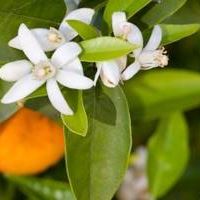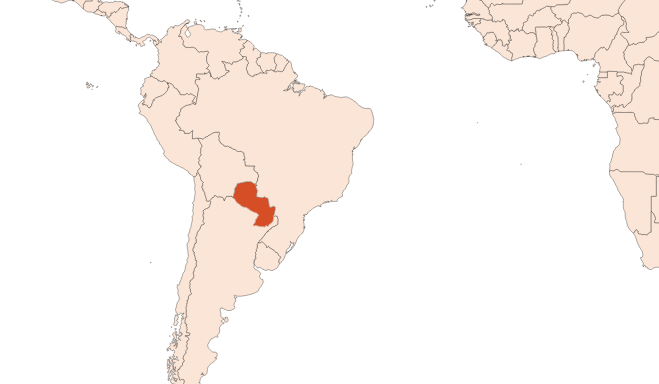
Do you sell any of the raw materials? Would you like to let our users know?
Send an email to fournisseurs@scentree.coto learn about our advertising opportunities.
Do you sell any of the raw materials? Would you like to let our users know?
Send an email to fournisseurs@scentree.coto learn about our advertising opportunities.
General Presentation
Uses
Other comments :
Initially, the term petitgrain was used to name the small green fruits produced by the bitter orange.
In Paraguay, the bitter orange barely flourishes. It is therefore a hybrid between the bitter orange and the sweet orange tree that is cultivated.
Paraguay remains the main grower of petitgrain. Eau de brout usually comes from Tunisia anyway.
Stability :
Esters found in this extract my form their corresponding acid through time.
Terpenes of this oil are subjected to polymerization under the effect of oxydation.
Uses in perfumery :
Used for orange blossom notes, at a lower cost than using other extracts from the bitter orange tree. Used to provide tenacity, a dark, fatty, solar and herbaceous faceted note of dry flowers.
Major Components :
- Linalool (50-60%)
- Linalyl Acetate (10-20%)
- Alpha-Terpineol (10-20%)
- Geraniol (10-20%)
- Alpha-Pinene (1-5%)

Photo credits: ScenTree SAS
Botanique :
Data not available.
Chemotypes :
The genus Citrus includes the vast majority of citrus fruits and includes a large number of varieties available in perfumery:
Bergamot - (Citrus bergamia) is a hybrid of lemon and bitter orange, grown for the essential oil of its fruit and petitgrain.
Bitter orange or bigarade orange - (Citrus aurantium), grown in Spain and Florida.
Citron - (Citrus medica), grown in Italy (Sicily).
Lemon - (Citrus limon), cultured in Italy for the essential oil of its fruit and of its leafy twigs (Petitgrain).
Combava - (Citrus hystrix), grown in Thailand and India.
Lime - (Citrus aurantifolia), grown for its fruit in Mexico for the most part.
Mandarin - (Citrus reticulata), grown mainly in Italy for its fruit and for its petitgrain, by extracting the leaves from the tree. Its hybrid with sweet orange gave birth to clementine.
Orange - (Citrus sinensis) is famous for the cultivation of its fruits, whose juice and essential oil are extracted in Brazil and California in particular, which is the most used of all perfumes.
Grapefruit - (Citrus paradisii) of Malay origin, is cultivated for its essential oil in Brazil and Israel in particular.
Yuzu - (Citrus junos), produced in Japan and Korea.
Extraction process :
The bigaradier is a tree about 3 meters tall in adulthood, whose leaves contain a strong fragrant principle.
The essential oil of petitgrain bigarade results from the extraction of the deciduous branches with water. The twigs are cut so the tree is left as a shrub. The branches are stored in a large cart before they are brought to the factory where they are directly steam distilled.
After the hydrodistillation, the water found in the distillate is called ''eau de brout ''. Eau de brout absolute is obtained after recovery of this water full of volatile compounds. A dilution in alcohol is carried out to solubilize the odorous compounds. Following vacuum evaporation of the extraction solvent, the absolute is obtained.
The bitter orange tree is a tree that allows to recover many extracts. Bitter Orange EO is obtained by cold expression, Petitgrain Bigarade HE can be extracted by steam distillation and Orange Blossom Absolute is obtained by extraction with volatile solvents, unlike Neroli HE, which results from water extraction of the flowers.
Geographic origin :
Data not available.
Regulations & IFRA
-
IFRA 51th : This ingredient is restricted by IFRA
-
Restriction type : RESTRICTION
-
Cause of restriction : PHOTOTOXICITY
-
Amendment : 49
- Quantitative limit on the use :
-
Cat.1 Cat.2 Cat.3 Cat.4 Cat.5A B C DCat.6 1,25 % 1,25 % 1,25 % 1,25 % 1,25 % 1,25 % 1,25 % 1,25 %1,25 % Cat.5A B C DCat.6 1,25 % 1,25 % 1,25 % 1,25 %1,25 % Cat.7A BCat.8 Cat.9 Cat.10A BCat.11A BCat.12 No Restriction 1,25 %1,25 % No Restriction No Restriction 1,25 %No Restriction 1,25 %No Restriction Cat.10A BCat.11A BCat.12 No Restriction 1,25 %No Restriction 1,25 %No Restriction
Annexe I :
Some regulated synthetic ingredients are found in nature and in certain proportions in natural ingredients. This presence in nature has to be taken into account when calculating limits of use recommended by the IFRA. In case you do not know these concentrations, you can use the ones estimated by the IFRA. Here they are :
| List of regulated compounds contained in this ingredient | ||
|---|---|---|
| Regulated ingredient name | CAS N° | Estimated Concentration |
| Citral | 5392-40-5 | 0,1 |
| Geraniol | 106-24-1 | 0,04 |
| Perilla aldehyde | 2111-75-3 | 0,02 |
Comments :
The Standard is set due to the phototoxic effects of Bitter orange peel oil expressed. For more detailed information on the application of this Standard, please refer to the note on phototoxic ingredients in chapter 1 of the Guidance for the use of IFRA Standards. If the level of furocoumarins is unknown, the restriction level specified in this IFRA Standard applies. Combination effects of phototoxic ingredients are only taken into consideration for the furocoumarin-containing fragrance ingredients (extracts) listed in the IFRA Standard of Citrus oils and other furocoumarins containing essential oils. If combinations of furocoumarin-containing phototoxic fragrance ingredients (extracts) are used, the use levels must be reduced accordingly. The sum of the concentrations of all furocoumarin-containing phototoxic fragrance ingredients (extracts), expressed in of their recommended upper concentration level in the consumer product shall not exceed 100. For qualities of the expressed oil in which the less volatile components have been concentrated by partial or total removal of the terpene fraction, this limit should be reduced in proportion to the degree of concentration.

